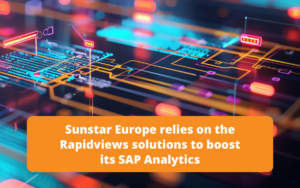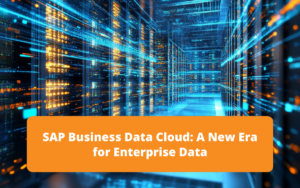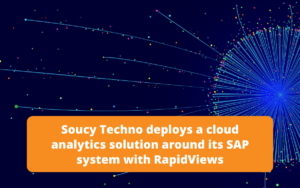What is the SAP Cloud Platform?
SAP Cloud Platform (SCP) is a Platform As A Service (PaaS) platform for developing new applications or extending existing applications in a secure SAP cloud environment based on SAP HANA in-memory technologies.
This platform includes an SAP HANA relational database, but can also be connected to existing on-premise DBMSs and/or other cloud systems. In addition, applications developed on SCP include open source standards such as Java, Javascript, Node.js and Cloud Foundry. In this way, SAP is opening up to independent software vendors.
SAP’s strategy behind this platform is clear: to enable both the rationalisation of the IS and the extension of existing internal applications in companies with emerging technologies, such as :
- Mobile applications
- Big Data : real-time analytics, predictive, etc.
- Blockchain : each blockchain technology integrates with a dedicated API (e.g. Hyperledger Fabric)
- DevOps : simplifies application development (Jira, Azure DevOps)
- IoT : via Remote Device Management Service (RDMS) & Message Management Service (MMS)
- Machine Learning : via SAP Leonardo in particular
- Open to a wide range of APIs
- UX : enables the development of user interactions based on user experience.
As a result, the spectrum of uses for SCP is very wide. We will try to explore some potentially interesting use cases for your business needs.
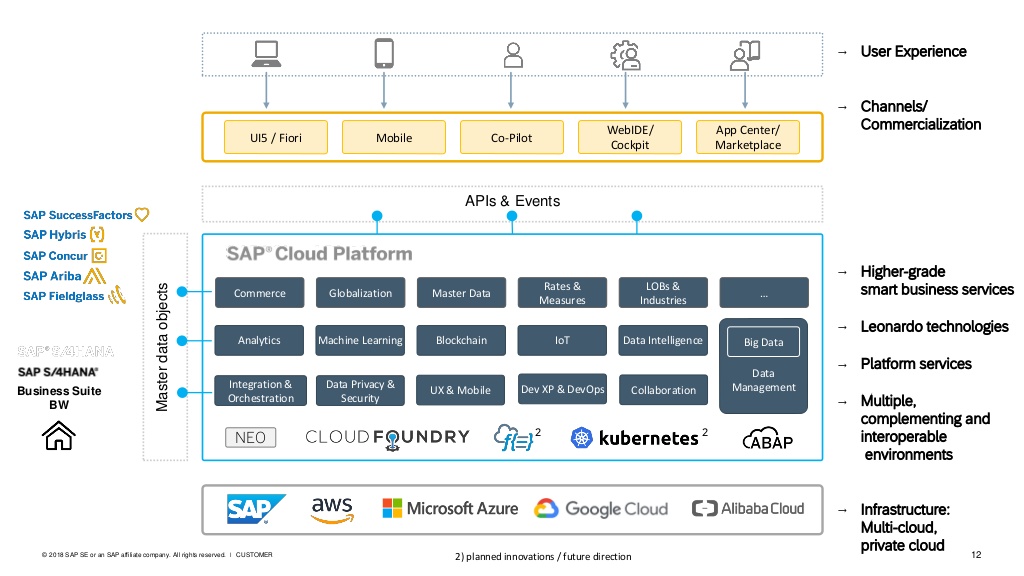
SAP Cloud Platform (SCP) – Overview
Note f: It is important to differentiate the SAP Cloud Platform from the SAP HANA Enterprise Cloud (HEC), which is an Infrastructure As A Service (IaaS) platform. HEC is a service that allows tools or solutions running on SAP HANA to be hosted in a private cloud provided by SAP.
Subscribe to the Rapid Views Newsletter !
Stay up to date with our latest blog posts, upcoming webinars and news!
SAP Cloud Platform licences
There are two licensing modes for SCP :
- Fixed subscription model : The subscription price is determined according to the resources allocated to the SCP service (CPU, RAM, disk space). SCP access is thus possible with unlimited use of the services, within the limits of the machine capacities allocated at start-up. This model allows you to plan your investments with predictable costs as long as the subscription is in force.
- Consumption-based model : use of credits to be consumed as needed. The price varies according to the use of the service. A model that ensures flexibility as a project progresses and adapts to your needs.
Some examples of use cases
Integration of APIs and third party applications
SAP API Management is a tool that enables an organisation to manage APIs on various SAP and non-SAP data platforms based on open source standards such as SOAP, REST and OData, with built-in security and centrally managed.
For example, it is possible to pull relevant data from web tools such as Google Suite and make it available to your users through the SCP platform, or use it with other data or applications available on the platform.
In addition, it may be crucial for the company to integrate third-party applications already in place into the cloud platform to streamline the IS.
For example, it may be interesting to integrate CRM, ERP, or external vendor application data to centralise this information in a single point.
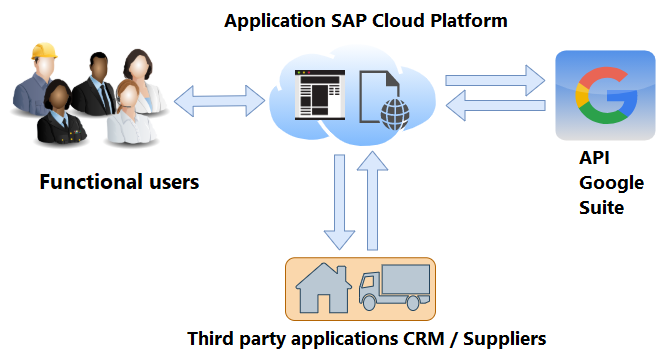
Overall scheme for integration of third party data sources
Our opinion : such an integration of applications and services requested by your organisation can allow you to centralise all your company data.
Virtual Datamarts on SAP ERP data via RapidViews
SCP provides the ability for an enterprise to master its BI system with cloud capabilities. For an SAP system, this involves the simplified integration of ECC6 ERP, ECC on HANA and S/4HANA.
The challenge here is to establish a connection between a HANA On Premise database and SCP, replicate the source content via the Smart Data Integration (SDI) module. And to make this data available to BI tools in an intelligible way.
The integrated HANA application development environment, the SAP Web IDE, is fully integrated with the SAP Cloud Platform. This includes the development and design of CDS Views and Calculation Views data models. This allows you to implement data warehouse and data mart logic to better manage your data and make it available and understandable to all your users through BI tools.
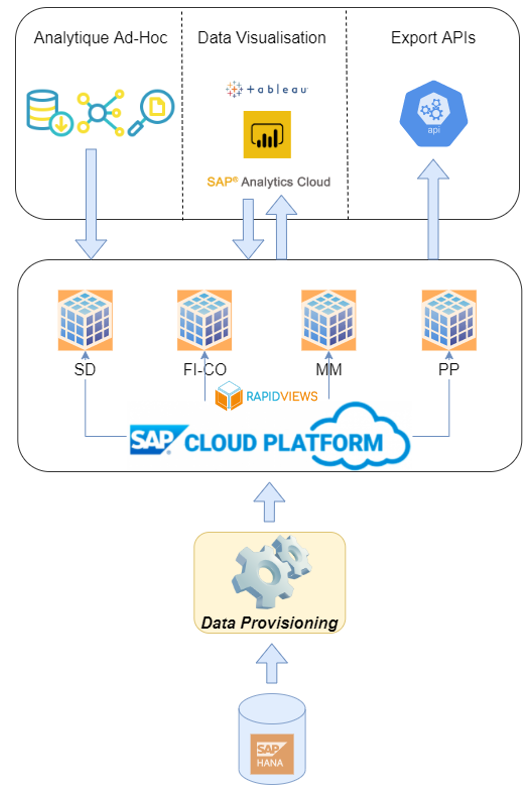
Replication scenario of an ECC6, ECC on HANA or S/4HANA database and provision of the data to end users
Expert's conclusion
With SAP Cloud Platform, SAP offers an all-inclusive solution that streamlines the IT environment of companies, provides a wide range of business intelligence and data capabilities, provides a cloud platform that can be accessed from anywhere in the world, and guarantees a secure, scalable and powerful environment for developers.
In addition to the optimised data processing thanks to the in-memory characteristic of SAP HANA, the platform also provides an end-to-end solution (from data to the final application) facilitating the development of machine learning, predictive analysis, IOT and analytics programs, thanks to all its connectors, APIs and openness towards open source technologies.
Installing our RapidViews FI-CO, SD, MM and PP products on this type of SCP platform will enable you to accelerate your BI deployment in the cloud, so that all your users can access information in a reliable, intelligible and centralized way.
